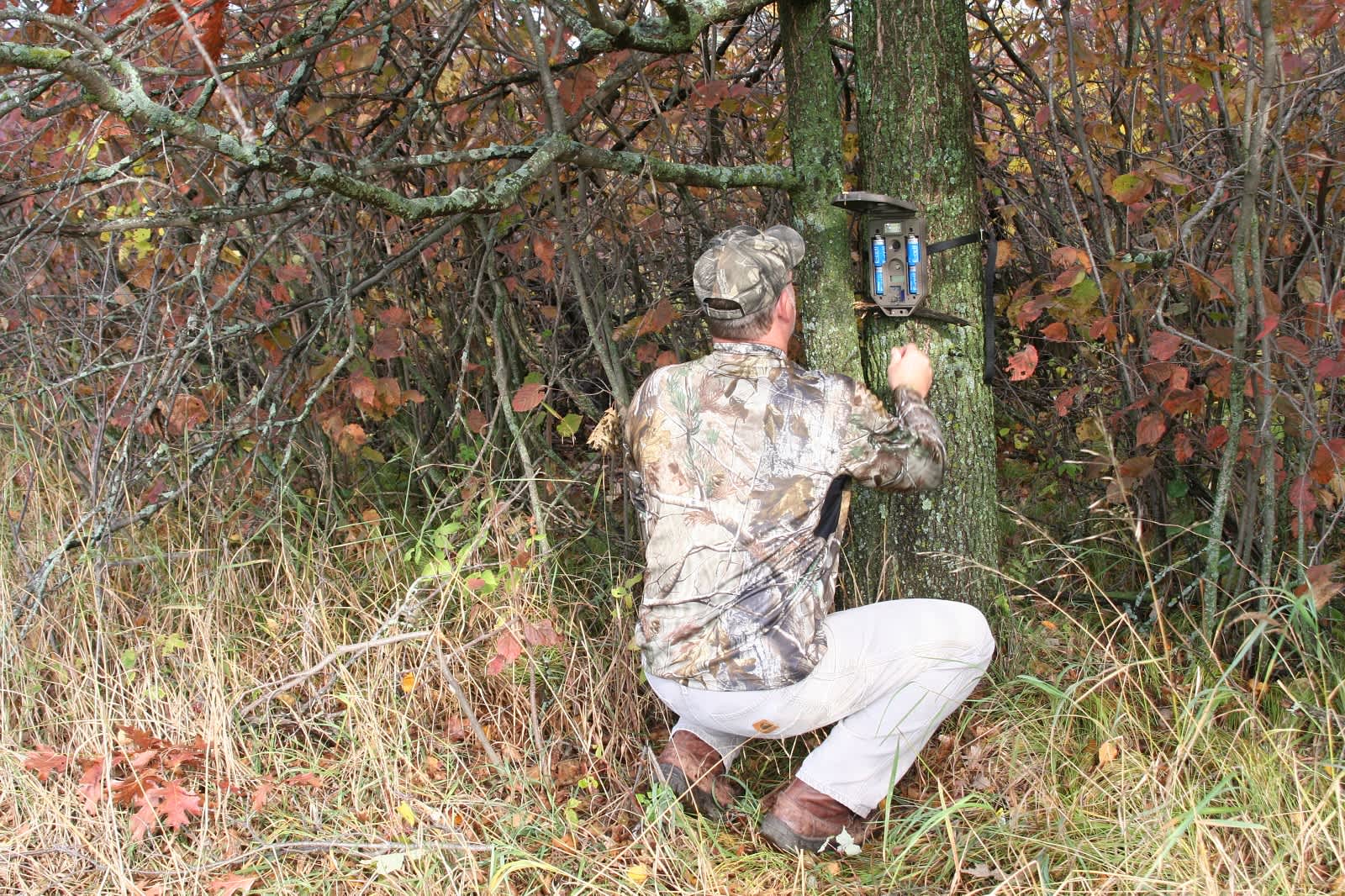A Trail Camera Timeline for November
Bernie Barringer 11.05.13

To be in the right place at the right time, you must predict where a buck is likely to be at any given time. The key to that is monitoring his movement with trail cameras placed in the right places at the right times. Here’s how to keep them on the bucks.
Patterning bucks can be like pushing a rope—it really doesn’t work very well. The advent of digital game cameras has significantly improved our odds of being in the right place at the right time.
Many people buy a couple of trail cameras and put them out in a good-looking spot, then leave them there for the entire season. Big mistake. The patterns and movements of the deer change and you should, too. If you haven’t seen much on your trail camera lately, you may think the bucks have left your property or gone underground. In fact, they may have just changed their patterns. Let’s take a look at where our game cameras should be placed through the month of November for maximum benefit and exposure to the bucks during the rut over most of North America.

Week one
During the first week of November, nearly every trail camera I own will be on scrapes. The does are not coming into heat yet, but they are starting to smell good and the frustration level in the bucks is really building. While the majority of scraping activity takes place under cover of darkness, bucks are visiting them regularly. The big primary scrapes are the ones you want. Look for an overhanging branch that’s been broken up accompanied by a large scrape with a couple of fresh tracks in it.
Putting cameras on these scrapes will do two things for you. First, they will help you inventory the bucks in the area, because most of the bucks will hit the scrape at one point or another. Second, they offer you the earliest clues as to which areas a specific buck is calling home. The bucks aren’t yet putting on a lot of miles, and they won’t be too far from the active scrape where you got their picture. That won’t be true next week, but it is for now. To increase the interest even further, you can freshen up these scrapes with some fresh urine or a scrape dripper that deposits fresh scent on them.
Week two
By the second week of November, breeding has started in earnest and scrapes are losing their appeal. Occasionally, a buck in the area will stop by and have a look at a nearby scrape, but they are low on the priority list. I want my cameras near doe bedding areas. I may even put a camera right in a bedding area on a heavy trail, and I will have some cameras on major connecting trails between known bedding areas. Both does and bucks will be using these trails at all hours of the day as the bucks are constantly moving does around, chasing and harassing them.
These daily photos will help you gauge the level of rutting activity and give you the information you need to decide where to hunt that very day. Make sure your camera is set on a short delay so you don’t get a photo of a doe moving by and miss the buck that’s following her.

Week three
By week three, many does are bred and bucks are really pounding the pavement to find more does that are just coming into heat. They are covering a lot of ground each day so your cameras need to be in high-percentage spots to catch a photo of a cruising buck. Funnels, pinch points, and major trail systems are your best bets. Look for topographic features that cause movement patterns to be restricted. That might be as subtle as the edge of a field or as obvious as a steep bluff along a river bank that creates a travel corridor. You are not necessarily setting on sign, you are setting on topography. Once you find a spot that is getting a lot of traffic, get a stand up and get in it before the traffic tapers off. This one-week window of opportunity is one of the best times of the year to bag a mature buck.
Week four
By the last week of November, the majority of does have been bred and rutting activity is tapering off. Bucks are not travelling as much and need to start recovering fat and muscle reserves from the rigorous past three weeks. Trails leading to food sources will be getting the most traffic at this time, and that’s true for both does and bucks. Bucks will occasionally check a scrape and a cluster of rubs, and they’ll pay particular attention to their large signpost rubs at this time.
As the rut winds down and the transition of activity focuses once again on feeding and less on breeding, don’t put your cameras away. The month of December is a good time to find out which bucks made it through the season, and high-carbohydrate food sources are where they will be found. The cycle starts over again.
Follow Bernie’s bowhunting adventures on his blog, bowhuntingroad.com.

